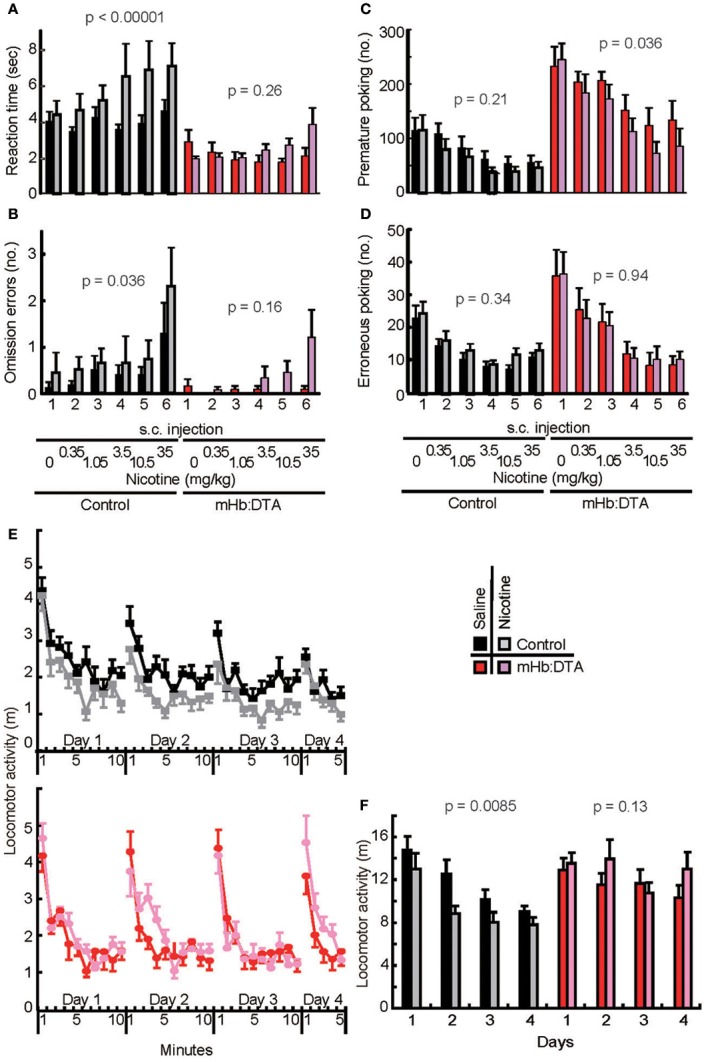Figure 7.

Lack of susceptibility to nicotine in mHb:DTA mice on 5-CSRTT performance and adaptation to a new environment. (A–D) Effects of nicotine on 5-CSRTT performance (mice were 9–11 months old, control-saline n = 9, control-nicotine n = 7, mHb:DTA-saline n = 7, mHb:DTA-nicotine n = 8). (A) Reaction times for nose-pokes after the presentation of signal light in 5-CSRTT. Nicotine (expressed as a free base dose) administration increased reaction times in a dose-dependent manner in control [nicotine main effect within subject F(1, 162) = 17.4, Three-Way ANOVA] but not mHb:DTA mice [nicotine main effect within subject F(1, 162) = 1.28]. (B) Omission errors were modestly increased by nicotine administration in control [nicotine main effect F(1, 162) = 4.48, Three-Way ANOVA] but not mHb:DTA mice [nicotine main effect F(1, 162) = 2.02]. (C) High premature nose-poke rates in mHb:DTA mice were modestly reduced by nicotine administration [nicotine main effect F(1, 162) = 1.54 and 4.6 within control and mHb:DTA, respectively, Three-Way ANOVA]. (D) Erroneous nose-pokes were not altered by nicotine [nicotine main effect F(1, 162) = 0.94 and 0.005 within control and mHb:DTA, respectively, Three-Way ANOVA]. (E,F) Effects of nicotine on the new environment adaptation task (mice were 6–7 months old, n = 8/group). Figure shows locomotor activity per 1 min (E) and for the first 5 min (F). Control mice showed decreased locomotor activity and habituated to the environment after repeated exposures. This habituation was accelerated by nicotine [nicotine main effect within wild-type control F(1, 112) = 7.18, Three-Way ANOVA]. mHb:DTA mice did not show typical habituation, and nicotine had no significant effect on locomotor behavior in any session [nicotine main effect within mHb:DTA F(1, 112) = 2.21]. s.c., subcutaneous. Data represent mean ± SEM.
